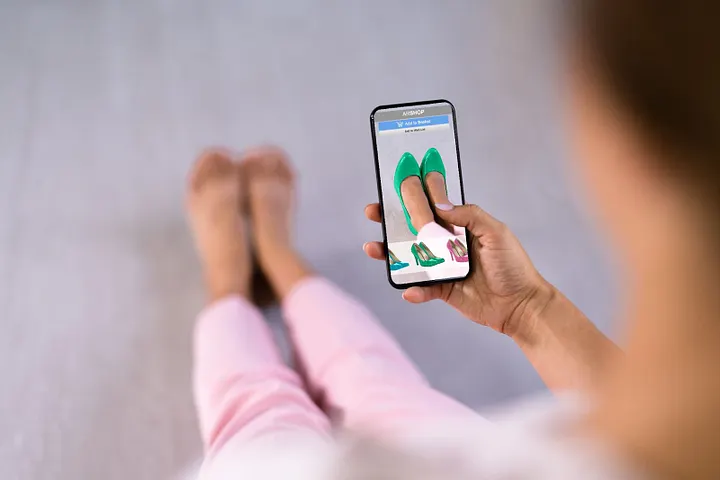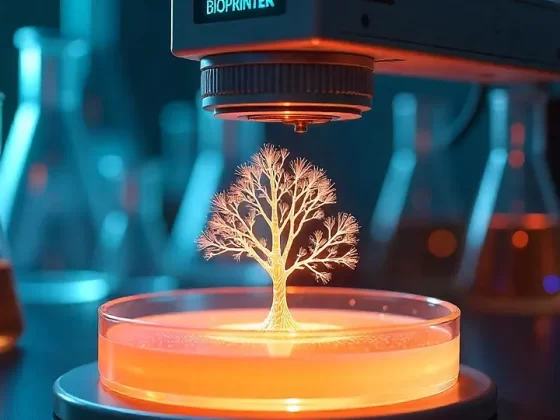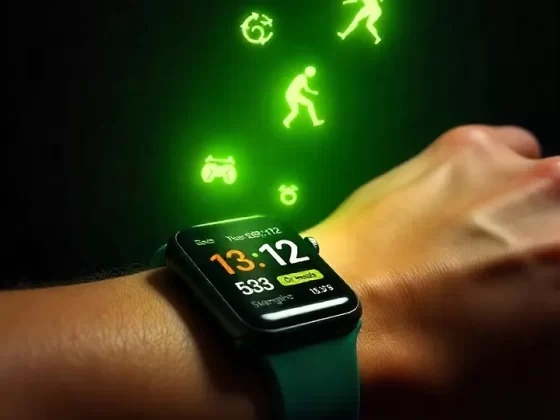The Future of E-Tailing: How AI 3D/AR & VR Becoming the Game Changers
– By Roopak Pathak
The rise of augmented reality (AR) and virtual reality (VR) is transforming the e-commerce landscape, ushering in a new era of immersive online shopping. These technologies are blending the physical and digital worlds, offering customers an interactive and engaging way to experience products. With AR and VR breaking the barriers between in-store and online shopping, they’re reshaping how people shop, providing a more personalized and captivating experience. According to McKinsey, the global AR and VR retail market is projected to grow at a compound annual growth rate (CAGR) of 40.7% from 2022 to 2027, showing just how significant these technologies will be for the future of e-commerce.
AR and VR: Redefining Product Interaction
One of the standout uses of AR in e-commerce is virtual try-ons, where customers can “try on” clothing, shoes or accessories from the comfort of their own home. This feature addresses the common uncertainty around fit and style that often holds online shoppers back. For example, ASOS uses AR to showcase virtual catwalks, letting customers see how clothes fit and move on models that resemble their own body type. This not only boosts engagement but also increases conversion rates. Additionally, AR helps reduce return rates — an ongoing issue in the fashion industry. Research from Boston Consulting Group shows that virtual try-ons can decrease returns by up to 25%, as customers feel more
confident about their purchases. In the home decor and furniture sectors, AR is proving equally valuable, allowing shoppers to visualize how products will look in their homes before buying. VR showrooms are also gaining popularity, especially for high-ticket items like furniture and cars. Companies like Lowe’s are experimenting with VR to let customers design and navigate through their home renovations virtually, providing a near-real preview of their projects. For luxury brands, VR showrooms offer an innovative, cost-effective alternative to physical stores, enabling customers to explore collections in detail and enjoy a highly interactive shopping experience
Interactive Product Demonstrations
AR and VR also address the limitations of traditional 2D product images by offering interactive product demonstrations. AR allows customers to interact with 3D models, rotate them, and zoom in on details, which is especially useful for complex products like electronics or appliances. Dyson, for example, uses AR to show how its vacuum cleaners and air purifiers would look in different parts of a customer’s home, making it easier to visualize how these products fit into their space. Meanwhile, VR takes the product demo a step further by letting customers virtually “test drive” products. Audi, for example, has developed a VR experience where customers can explore the interiors and features of its cars in a fully immersive environment. This hands-on virtual experience helps customers feel more connected to the product and more confident in their decision to buy
Enhancing Personalisation in Beauty and Fashion
AR is playing a major role in creating personalized shopping experiences, especially in the beauty industry. AR filters allow customers to experiment with makeup, hair colors, and skincare products in real time. Sephora’s Virtual Artist app is a standout example, letting users preview how different shades of lipstick or eyeshadow will look on their skin tone. This level of personalisation not only makes the shopping experience more fun and engaging but also leads to increased sales. McKinsey’s 2022 report highlights that AR-driven personalisation can increase customer satisfaction by 20%, improving both retention rates and brand loyalty.
Virtual Events and Pop-Up Shops
AR and VR are also revolutionizing how brands host pop-up shops and exclusive events. These virtual environments allow customers to engage with products in a fun, interactive setting, often gamifying the shopping experience to spark excitement. Nike, for example, created a VR experience where users could participate in a virtual marathon, earning discounts based on their performance. These types of experiences can also be integrated into social media platforms, further broadening a brand’s reach and visibility. Brands that emphasize eco-friendly practices — like ethical sourcing or carbon-neutral shipping — are gaining traction with consumers who are increasingly conscious of the environment. Platforms like Etsy have successfully built sustainability into their brand identity by supporting local artisans and prioritizing green practices.

Tech Innovations Shaping the Future of Shopping
Cutting-edge technologies are also transforming the e-commerce landscape. Voice shopping is projected to generate $40 billion in U.S. e-commerce sales by 2025, and tools like Google Lens are making product discovery easier than ever. Augmented Reality (AR) and Virtual Reality (VR) are providing immersive shopping experiences, allowing consumers to virtually try on clothes, visualize home décor, or interact with products in a way that feels almost like real-life shopping. These tech innovations appeal especially to younger, tech-savvy shoppers who want a seamless, intuitive, and interactive experience
The Future of E-commerce
has evolved beyond just selling products — it’s now about creating a personalized, frictionless experience that matches the expectations of today’s shopper. To succeed in this competitive space, businesses need to deeply understand consumer behavior, adopt mobile-first strategies, harness the power of social media, and prioritize sustainability. As technologies like voice search, AR, and VR continue to reshape the shopping experience, brands that stay ahead of these trends will lead the charge in the future of e-commerce, driving the 21st-century retail revolution.











